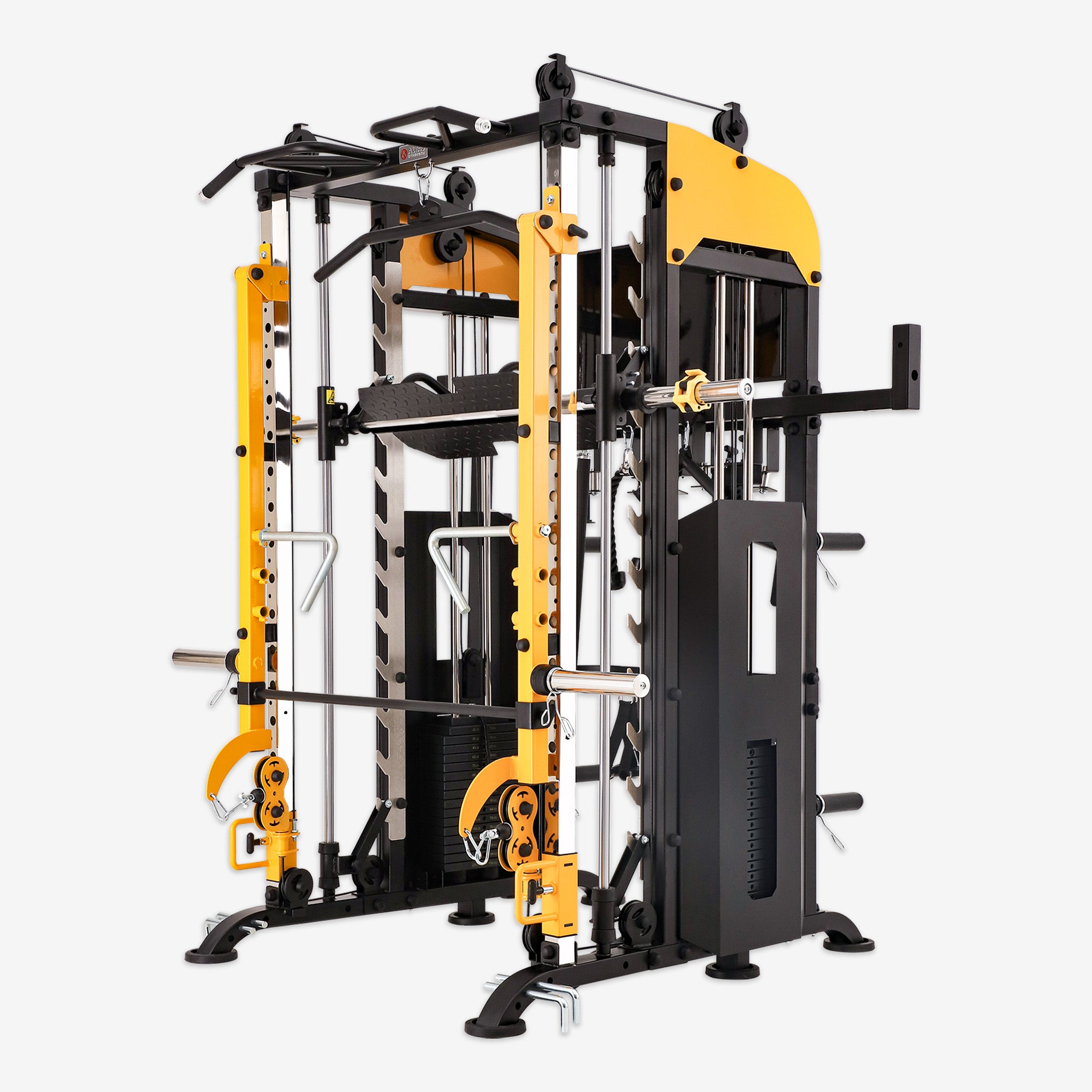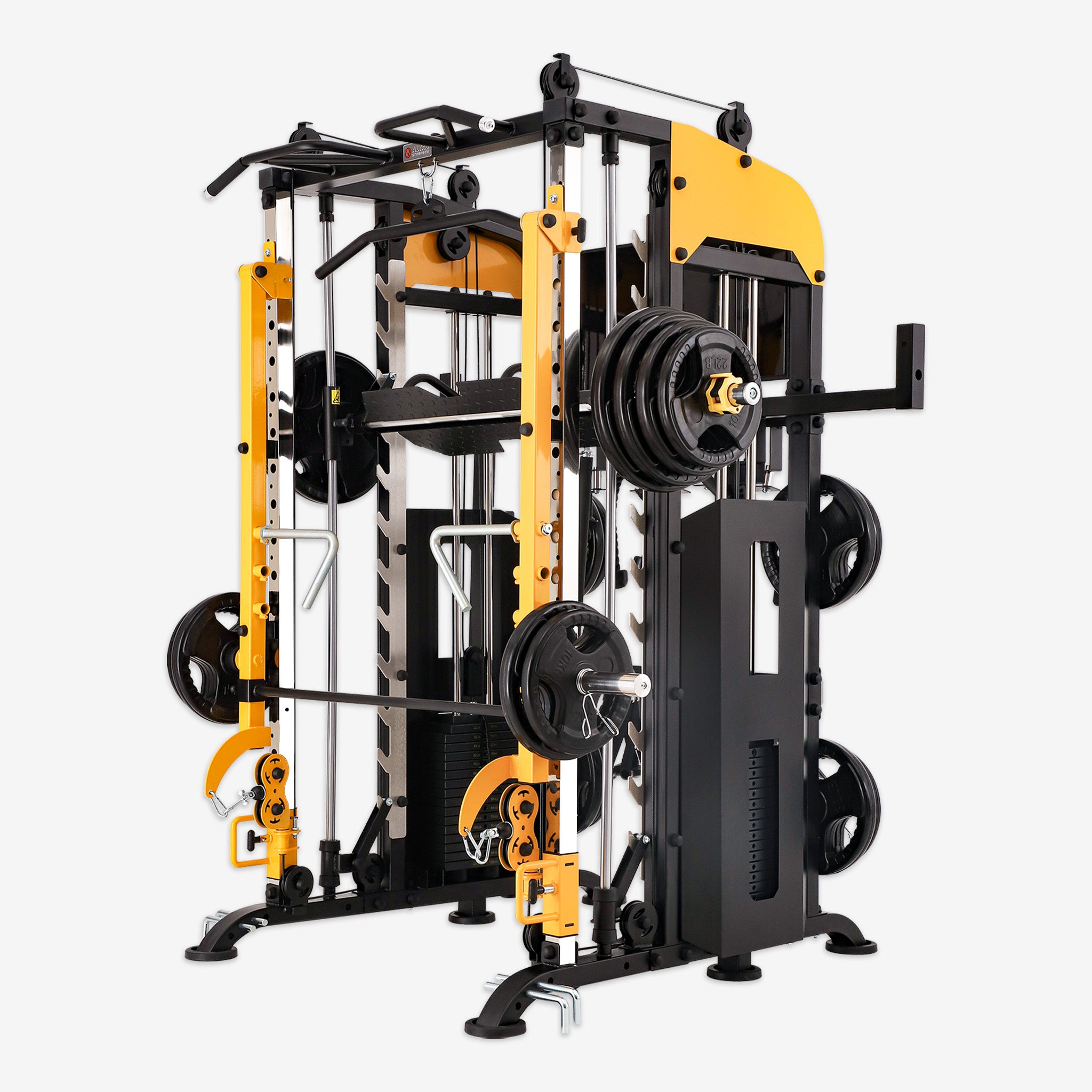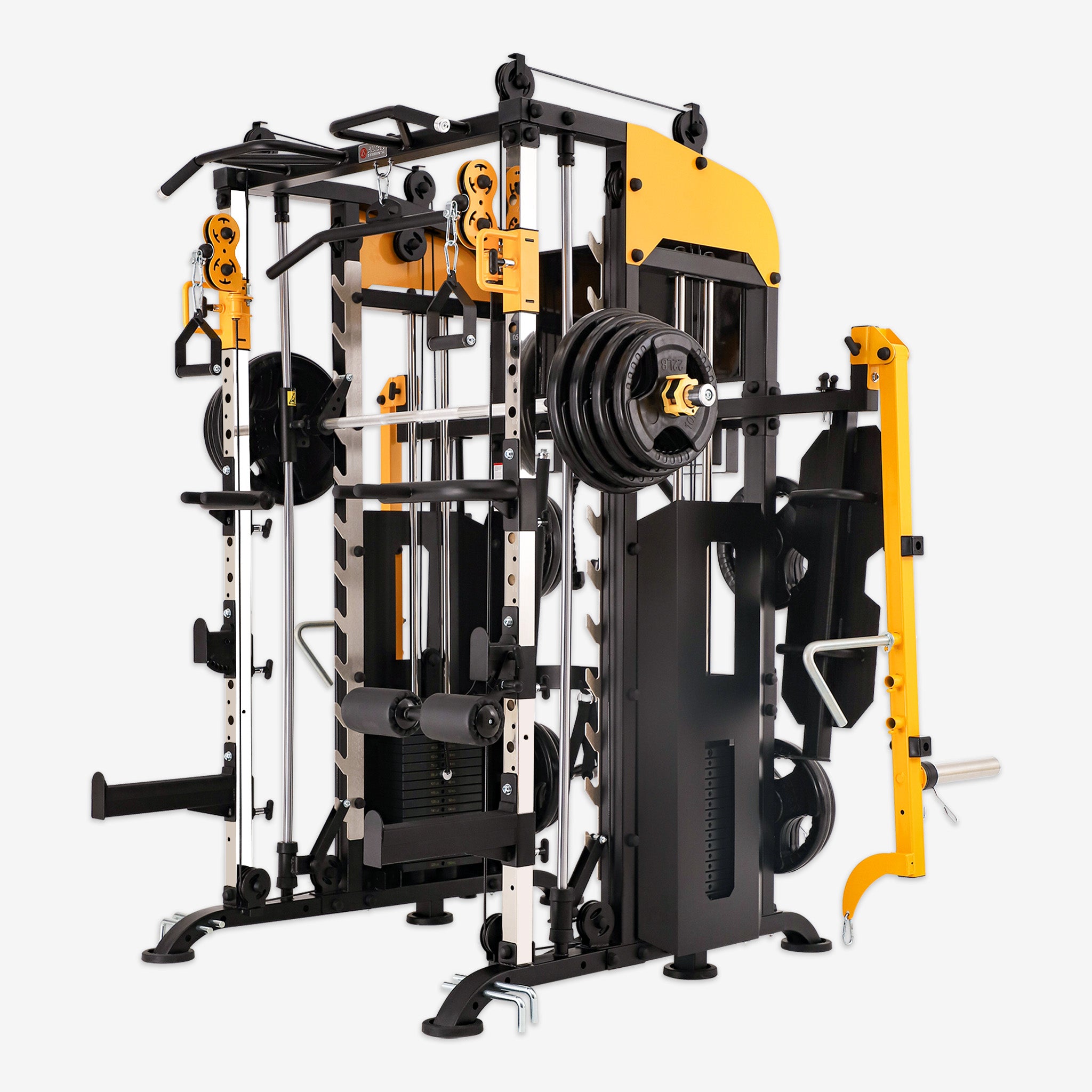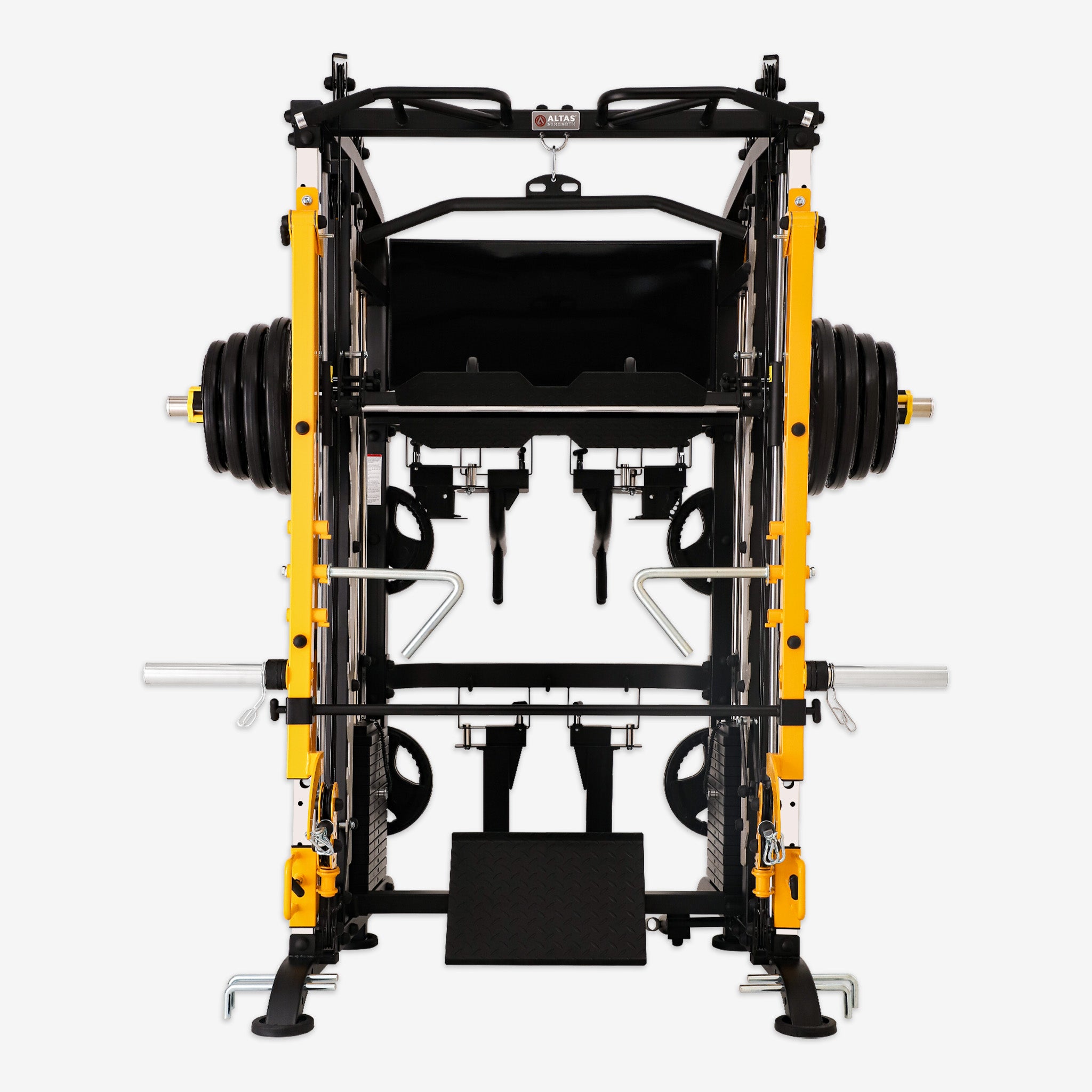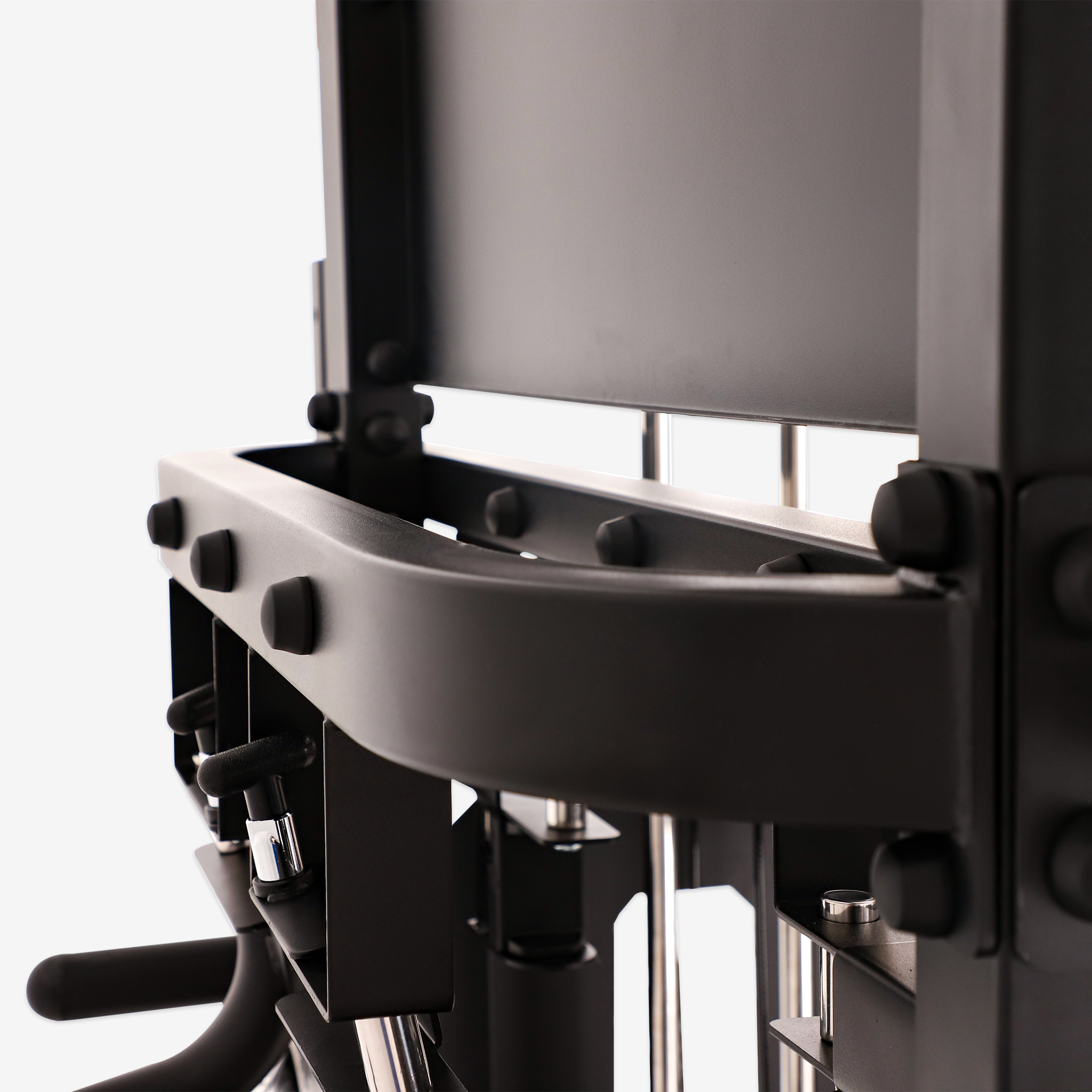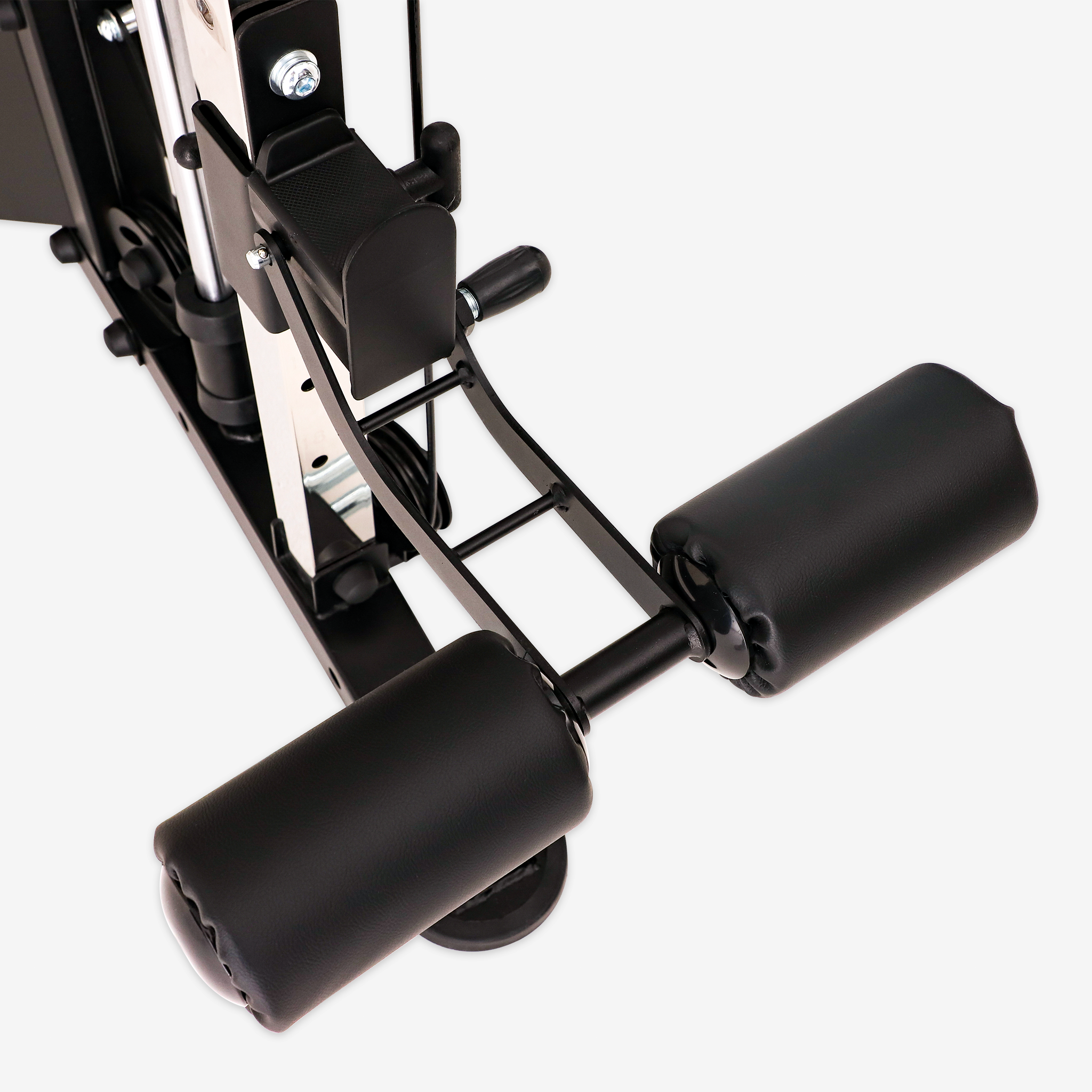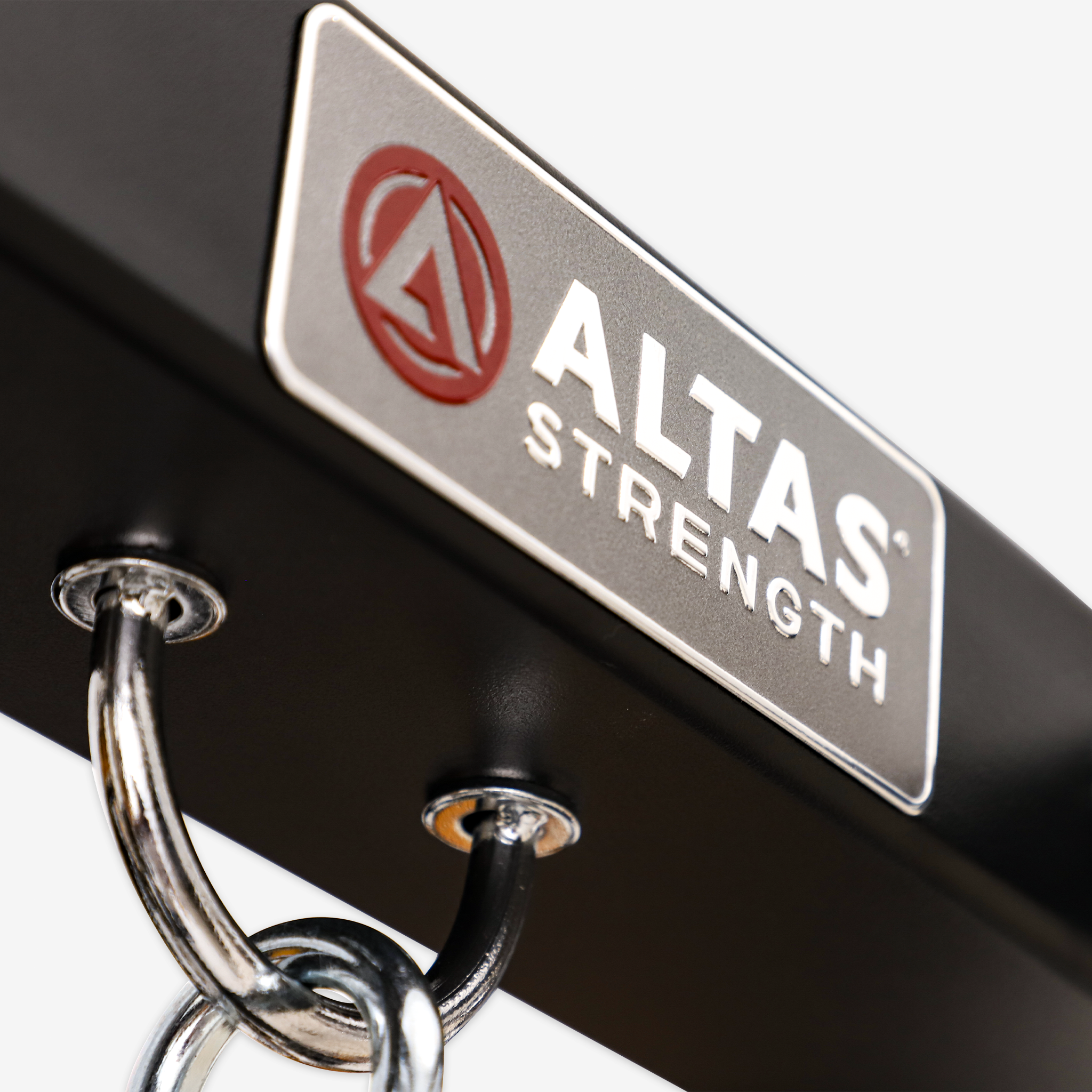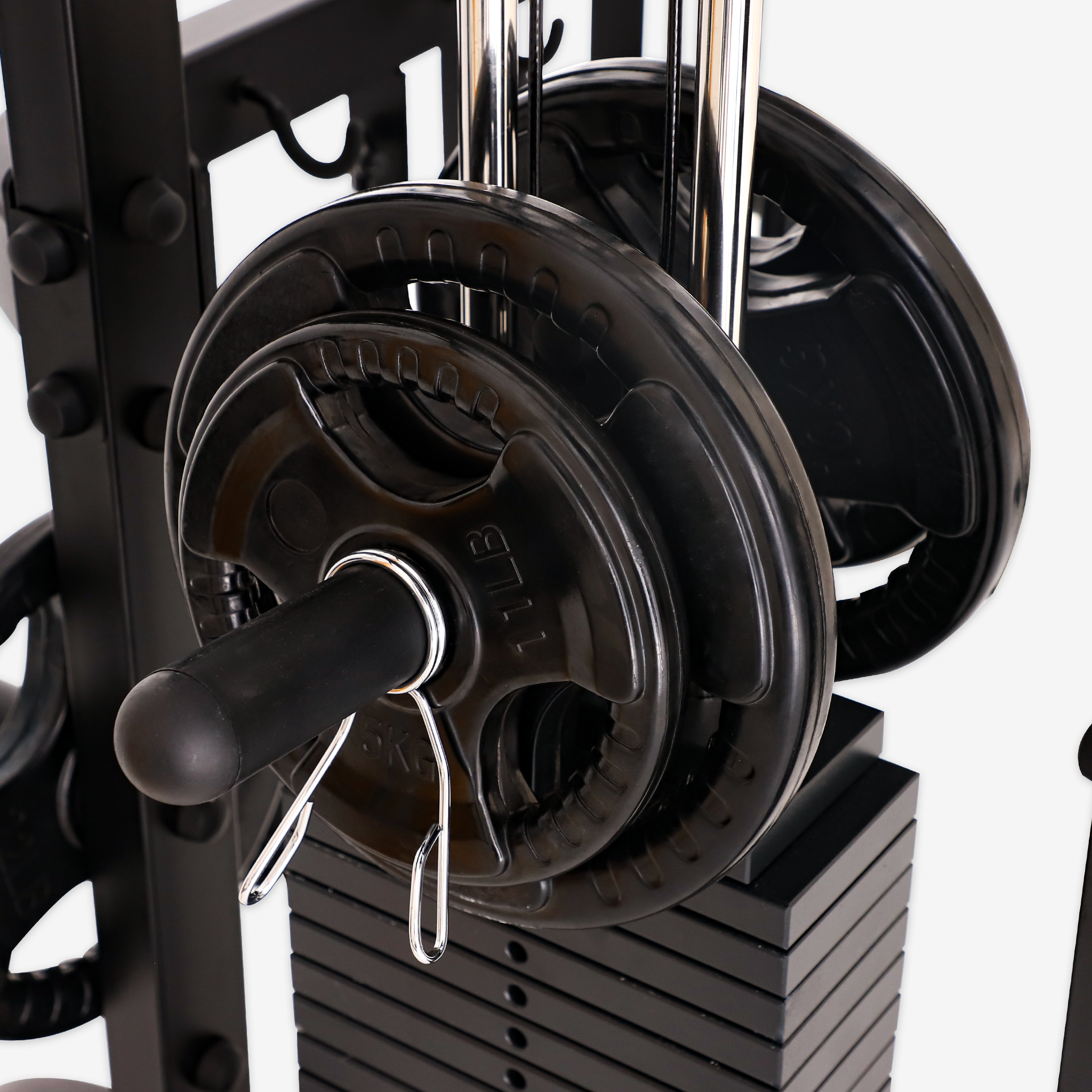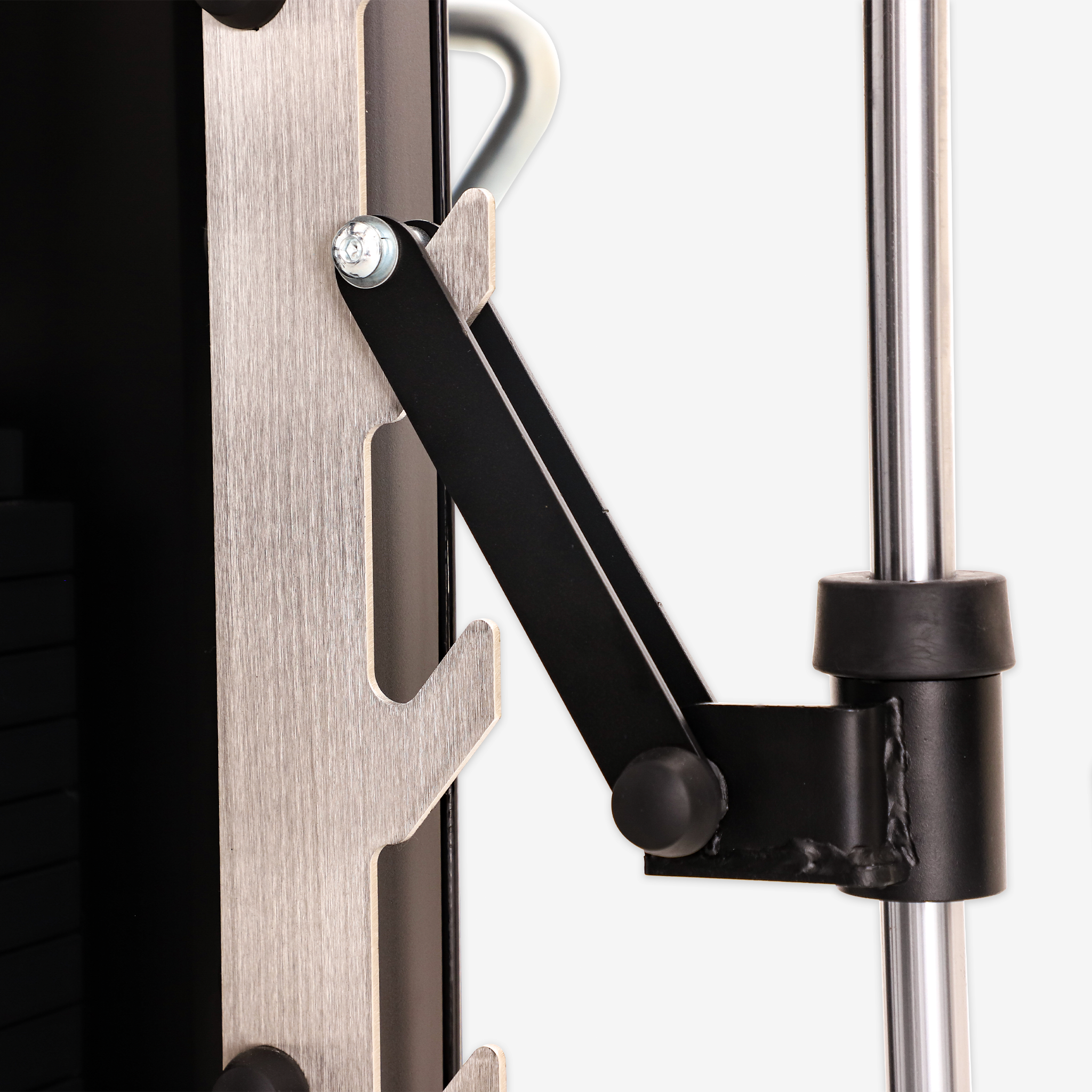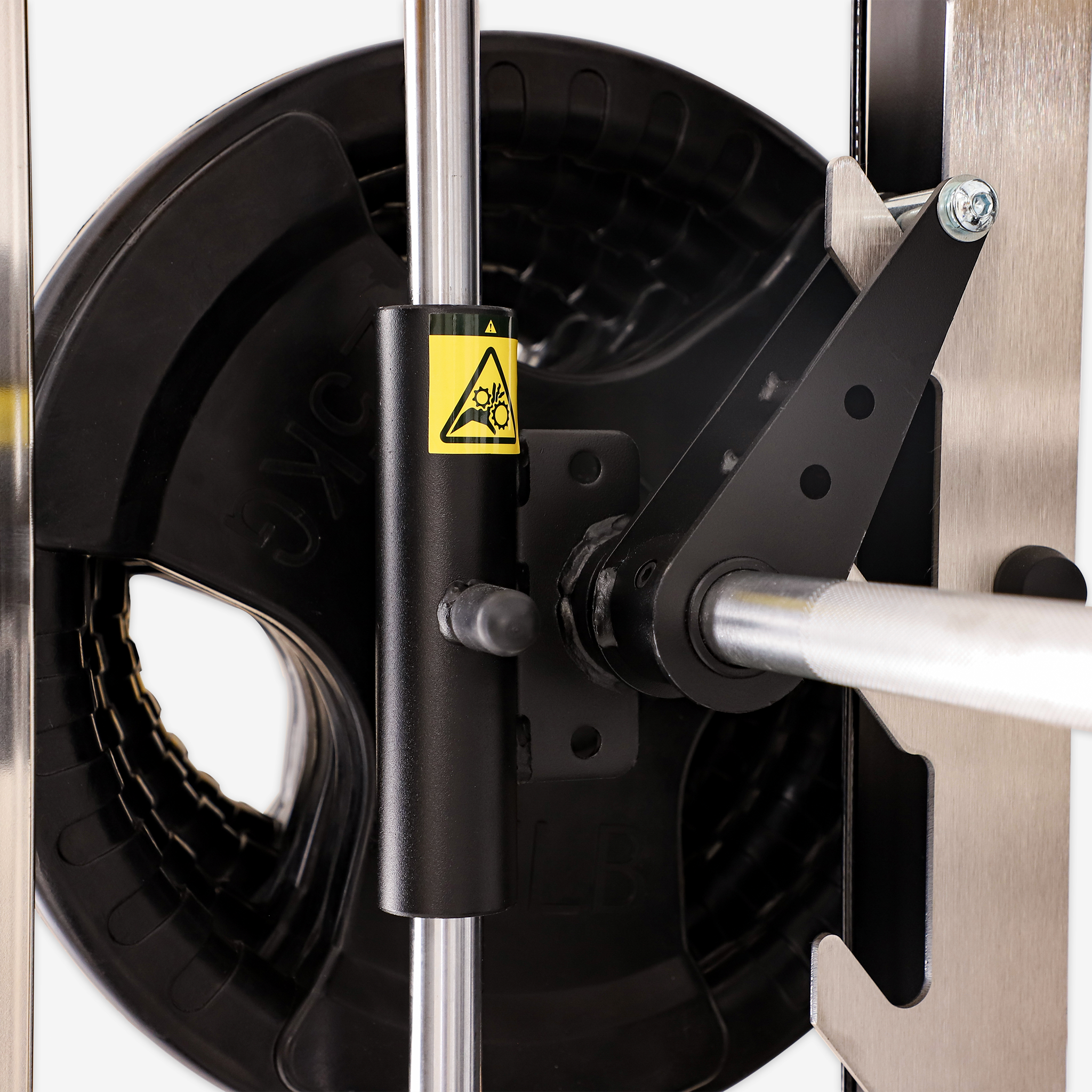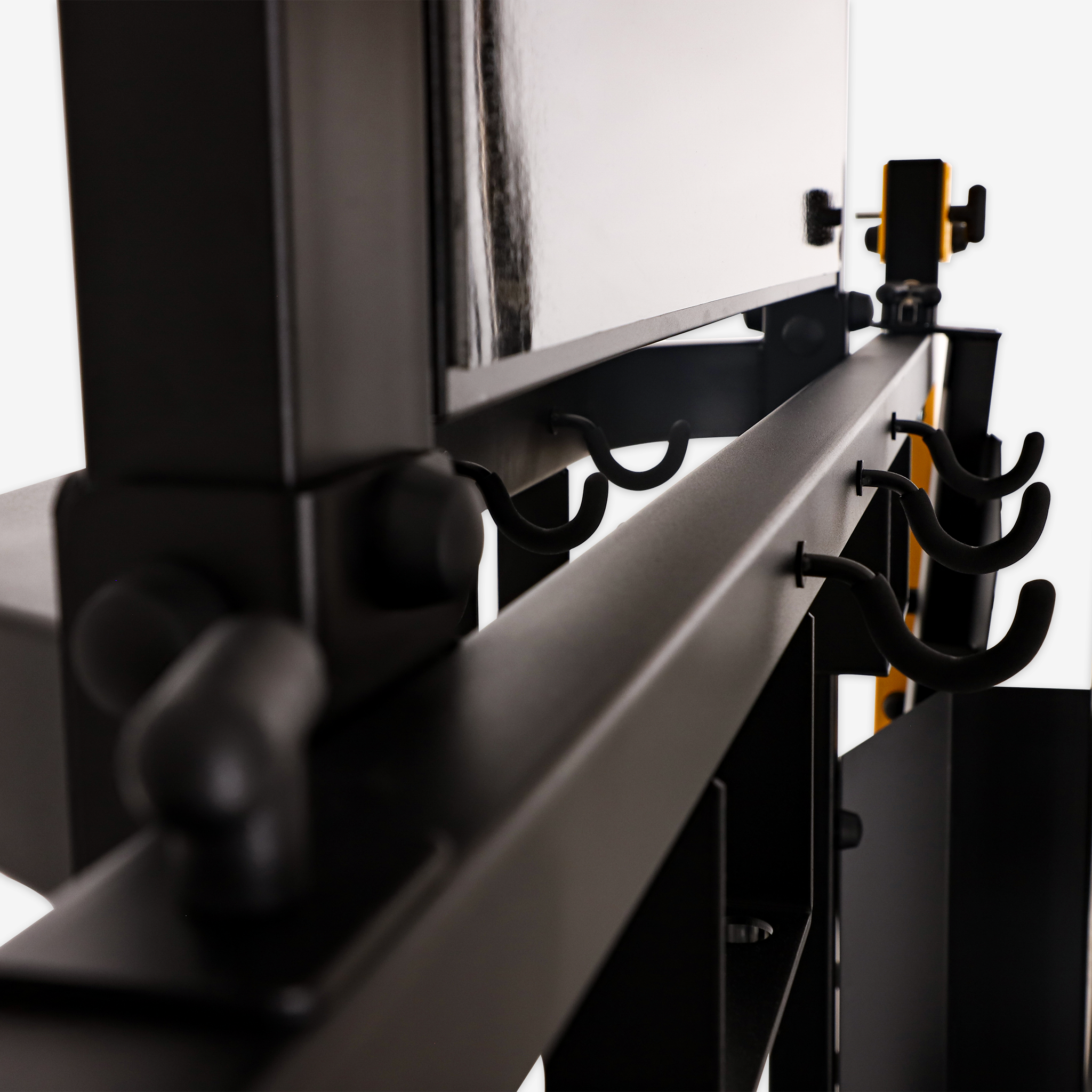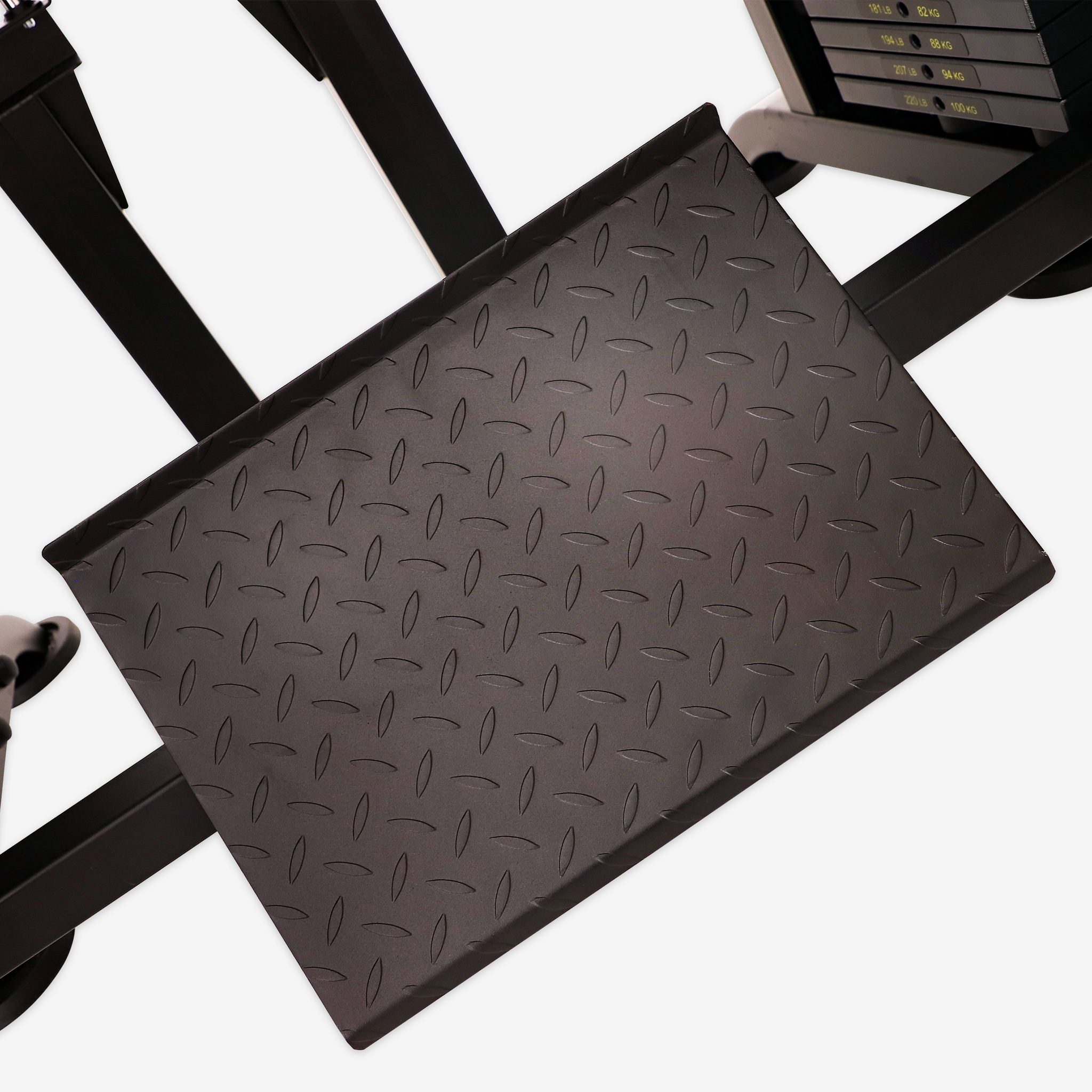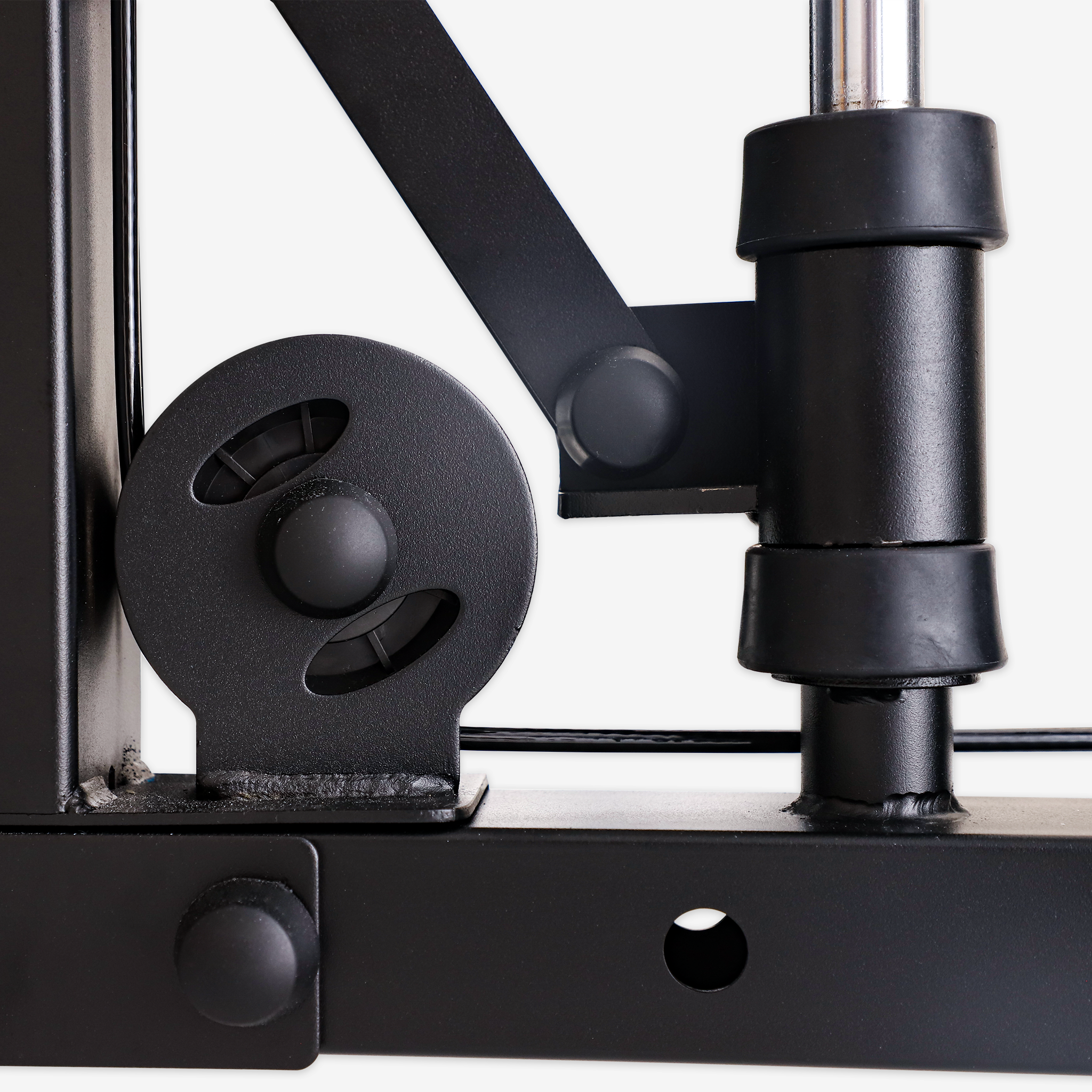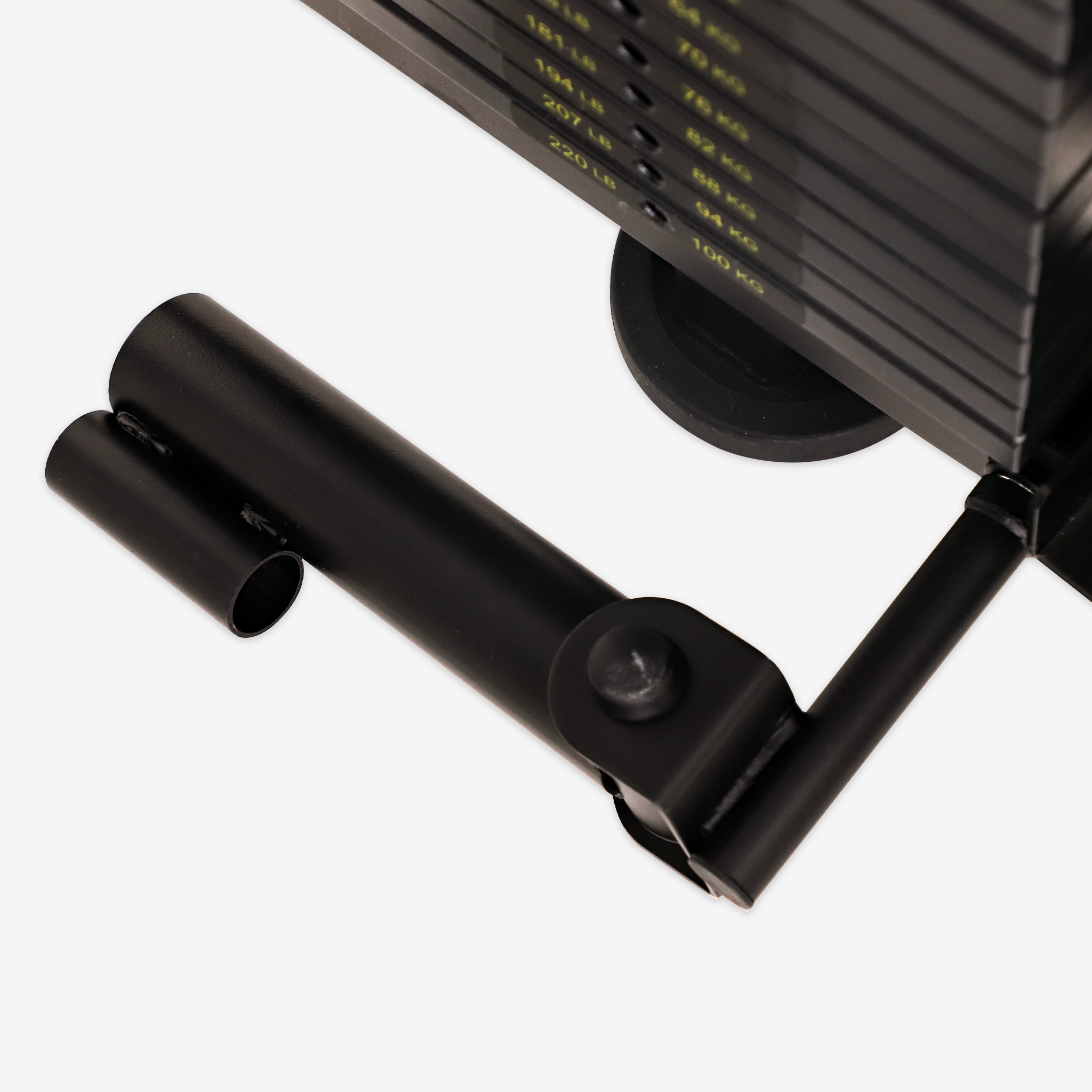Deadlifts are a highly effective exercise for strengthening your back, legs, and core muscles. They are a staple in the training routines of fitness enthusiasts and athletes alike. However, traditional free-weight deadlifts can be challenging, especially for beginners or those with specific equipment limitations. The Smith machine, with its fixed-path design, can simplify the movement, reduce the risk of injury, and ensure the exercise is both safe and effective. In this blog, we’ll explore the methods, advantages, and precautions for performing deadlifts on the Smith machine.
I. Advantages of the Smith Machine Deadlift
-
Reduced Injury Risk Through Fixed Path
The Smith machine’s barbell is fixed in a vertical track, which helps beginners maintain a proper motion path. This minimizes the risk of injury from improper form. -
Convenient Weight Adjustment
Adjusting the weight plates on the Smith machine is quick and easy. This flexibility makes it suitable for all fitness levels and training goals. -
Enhanced Stability
The Smith machine provides additional support, allowing you to focus on proper muscle engagement without worrying about stabilizing the barbell. -
Suitable for Compound Training
Deadlifts are compound exercises that engage multiple muscle groups. Using the Smith machine can help you maximize the benefits of compound training with proper form.
II. Preparation for the Smith Machine Deadlift
-
Selecting the Appropriate Weight
Start with lighter weights if you’re a beginner, and gradually increase the weight as you gain experience and confidence. -
Adjusting the Bar Height
Set the bar at a height that aligns with your knee level or slightly below it to ensure proper form and execution. -
Choosing the Right Stance
Position yourself under the bar with your feet slightly wider than shoulder-width apart, and your toes turned out slightly. This ensures a solid and stable stance.
III. The Correct Form for the Smith Machine Deadlift
-
Starting Position:
- Stand with your feet slightly wider than shoulder-width apart, with toes turned out.
- Bend your knees until your thighs are parallel to the floor.
- Keep your back straight, core engaged, and grip the bar with your hands slightly wider than shoulder-width. You can use either an over-under grip or a double overhand grip.
-
The Ascent:
- Push through both your legs and back to lift the bar.
- Maintain a straight back throughout the movement.
- The bar should follow the fixed path until your body is fully extended.
-
The Descent:
- Control the descent of the bar, returning it slowly to the starting position.
- Engage your core to prevent letting the bar drop too quickly.
- Repeat the movement, ensuring proper form and control throughout.
IV. Techniques and Precautions
-
Maintaining Proper Form
- Always keep your back straight. If you experience discomfort, stop and adjust your posture.
- Never lock your knees during the movement to prevent knee strain.
- It’s recommended for beginners to seek guidance from a coach to ensure proper form.
-
Breathing Techniques
- Exhale as you lift the bar to generate more power.
- Inhale as you lower the bar to recover and maintain muscle engagement.
-
Choosing the Right Grip
- Use an over-under grip for added grip strength when lifting heavy weights.
- A double overhand grip is better suited for beginners or lighter weights.
-
Gradually Increasing Weight
- Start with manageable weights and increase gradually while ensuring your form remains intact.
V. Common Mistakes and Corrections
-
Rounded Back
- Mistake: Many beginners round their backs during deadlifts, which increases the risk of injury.
- Correction: Keep your back straight and your core engaged throughout the movement.
-
Overreliance on Leg Strength
- Mistake: Some lifters focus too much on their legs and forget to engage their back and core.
- Correction: Ensure proper engagement of both the legs and back to get the full benefit of the exercise.
-
Deviation from the Bar Path
- Mistake: If your grip or stance is incorrect, the bar may deviate from its fixed path.
- Correction: Position yourself correctly with the right grip width to ensure smooth movement along the track.
VI. Conclusion
The Smith machine deadlift is a great way to perform this powerful exercise with safety and effectiveness. Whether you’re a beginner or an experienced lifter, the Smith machine provides the stability and support needed to execute the deadlift with precision. By following the proper form, making gradual weight adjustments, and avoiding common mistakes, you can achieve excellent results while minimizing injury risks. We hope this guide will help you incorporate the Smith machine deadlift into your routine and meet your fitness goals!




